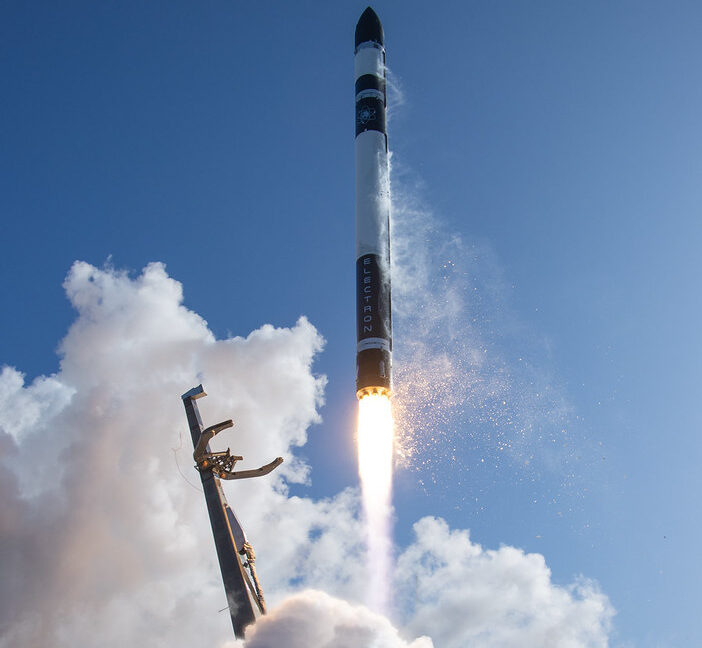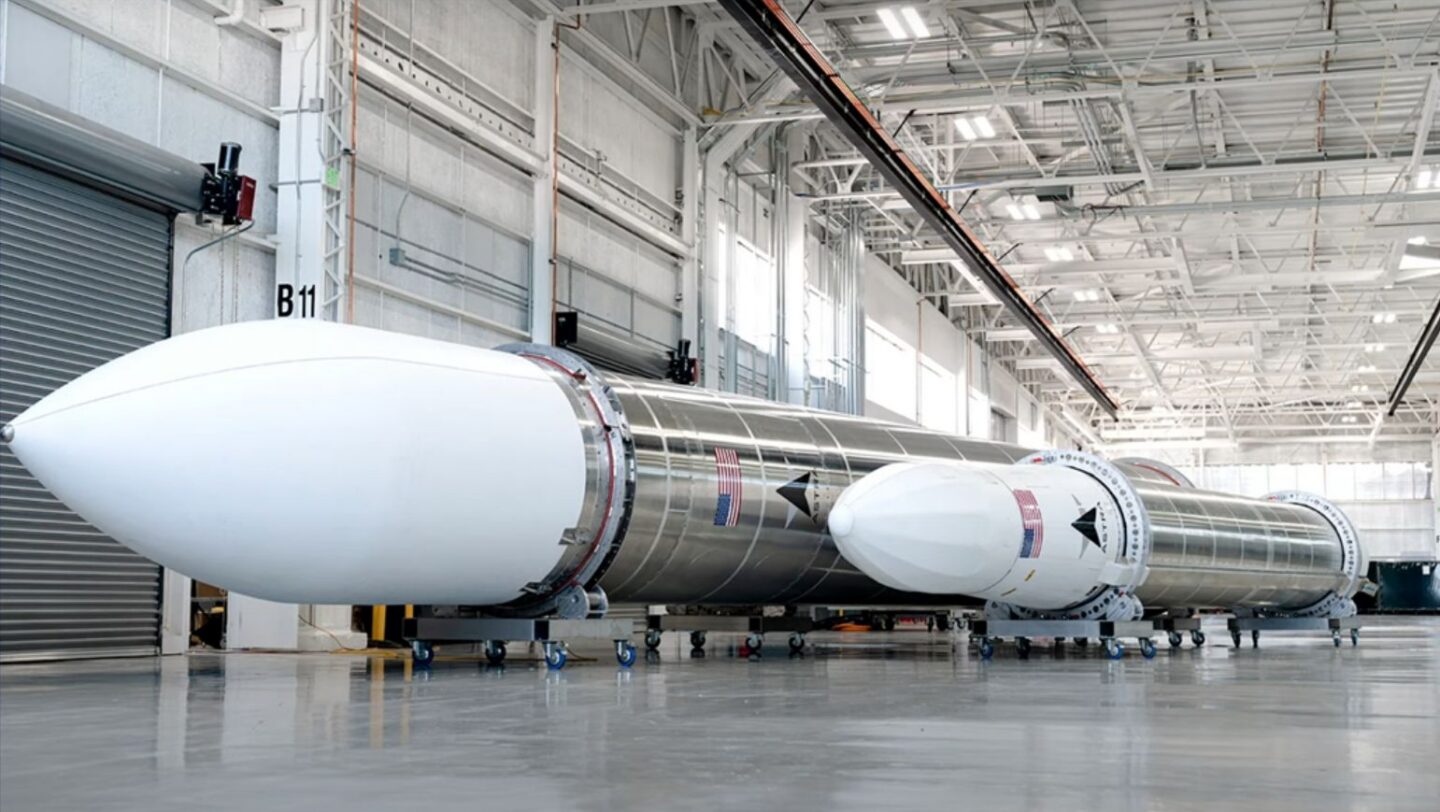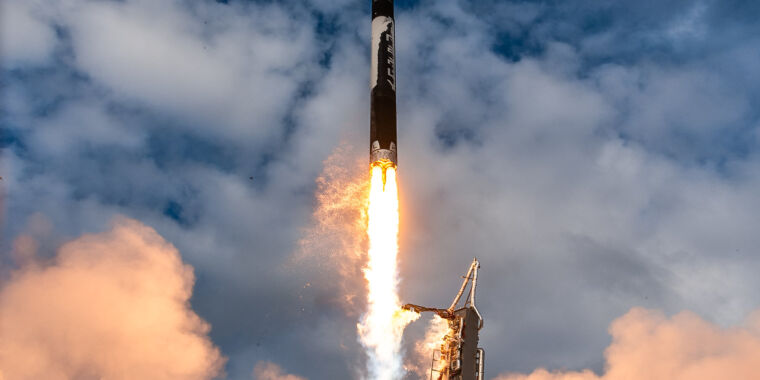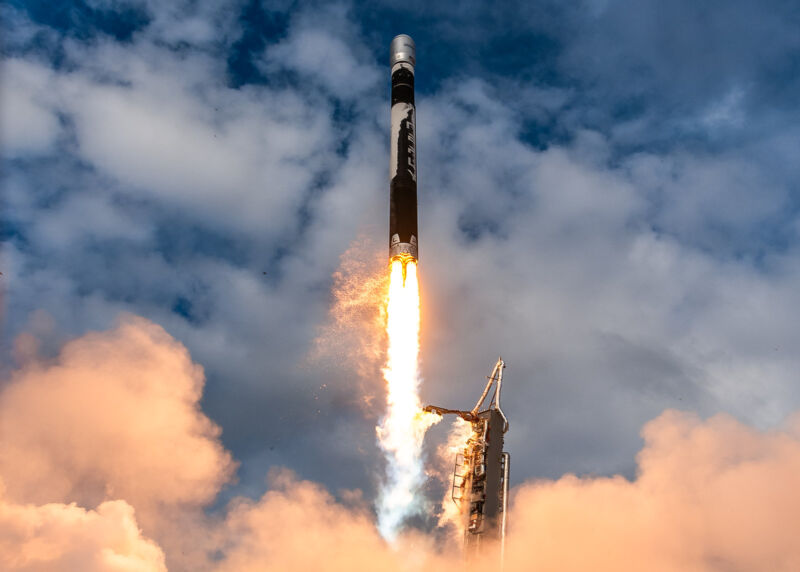Rocket Report: Alpha explodes on test stand; Europe wants a mini Starship
“We are trying to find a partner that is willing to invest.”
An Electron rocket launches a Synspective satellite in 2022. Credit: Rocket Lab
Welcome to Edition 8.13 of the Rocket Report! It’s difficult for me to believe, but we have now entered the fourth quarter of the year. Accordingly, there are three months left in 2025, with a lot of launch action still to come. The remainder of the year will be headlined by Blue Origin’s New Glenn rocket making its second flight (and landing attempt), and SpaceX’s Starship making its final test flight of the year. There is also the slim possibility that Rocket Lab’s Neutron vehicle will make its debut this year, but it will almost certainly slip into 2026.
As always, we welcome reader submissions, and if you don’t want to miss an issue, please subscribe using the box below (the form will not appear on AMP-enabled versions of the site). Each report will include information on small-, medium-, and heavy-lift rockets as well as a quick look ahead at the next three launches on the calendar.

An Alpha rocket blows up on the pad. The booster stage for Firefly Aerospace’s next Alpha rocket was destroyed Monday in a fiery accident on the company’s vertical test stand in Central Texas, Ars reports. Firefly released a statement confirming the rocket “experienced an event that resulted in a loss of the stage.” The company confirmed all personnel were safe and said ground teams followed “proper safety protocols.” Imagery posted on social media platforms showed a fireball engulfing the test stand and a column of black smoke rising into the sky over Firefly’s facility roughly 40 miles north of Austin.
Supposed to be a return-to-flight mission … Engineers were testing the rocket before shipment to Vandenberg Space Force Base, California, to prepare for launch later this year with a small commercial satellite for Lockheed Martin. The booster destroyed Monday was slated to fly on the seventh launch of Firefly’s Alpha rocket, an expendable, two-stage launch vehicle capable of placing a payload of a little over 2,200 pounds, or a metric ton, into low-Earth orbit. This upcoming launch was supposed to be the Alpha rocket’s return to flight after an in-flight failure in April, when the upper stage’s engine shut down before the rocket could reach orbit and deploy its satellite payload.
Europe wants a mini Starship. The European Space Agency signed a contract Monday with Avio, the Italian company behind the small Vega rocket, to begin designing a reusable upper stage capable of flying into orbit, returning to Earth, and launching again. The deal is worth 40 million euros ($47 million), Ars reports. In a statement, Avio said it will “define the requirements, system design, and enabling technologies needed to develop a demonstrator capable of safely returning to Earth and being reused in future missions.”
Don’t expect progress too quickly … At the end of the two-year contract, Avio will deliver a preliminary design for the reusable upper stage and the ground infrastructure needed to make it a reality. The preliminary design review is a milestone in the early phases of an aerospace project, typically occurring many years before completion. For example, Europe’s flagship Ariane 6 rocket passed its preliminary design review in 2016, eight years before its first launch. Avio and ESA did not release any specifications on the size or performance of the launcher.
The easiest way to keep up with Eric Berger’s and Stephen Clark’s reporting on all things space is to sign up for our newsletter. We’ll collect their stories and deliver them straight to your inbox.
Rocket Lab scores 10 more Electron launches. Synspective, a Japanese company developing a constellation of radar imaging satellites, has signed a deal with Rocket Lab for an additional 10 Electron launches, Space News reports. The companies announced the agreement on Tuesday at the International Astronautical Congress, confirming that each launch would carry a single StriX radar imaging satellite.
A repeat customer … Synspective signed a separate contract in June 2024 for 10 Electron launches, scheduled for 2025 through 2027. That was the largest single contract for Electron to date. Rocket Lab notes that Synspective is its largest Electron customer, with six launches completed to date and a backlog of 21 launches through the end of the decade. Synspective aims to place 30 synthetic aperture radar imaging satellites in orbit by 2030. This contract ensures that Electron will continue flying for quite a while.
German investment could benefit small launchers. During his address at Germany’s third annual Space Congress, Defense Minister Boris Pistorius announced that Germany would invest 35 billion euros ($41 billion) in space-related defense projects by 2030, European Spaceflight reports. “The conflicts of the future will no longer be limited to the Earth’s surface or the deep sea,” he said. “They will also be fought openly in orbit. That’s why we are building structures within the Bundeswehr to enable us to effectively defend and deter [threats] in space in the medium and long term.”
Launch an investment area … The investment will cover five main priorities: hardening against data disruptions and attacks, improved space situational awareness, redundancy through several networked satellite constellations, secure, diverse, and on-demand launch capabilities, and a dedicated military satellite operations center. Although Germany’s heavy-lift needs will continue to be met by Ariane 6, a program to which the country contributes heavily, domestic small-launch providers such as Rocket Factory Augsburg, Isar Aerospace, and HyImpulse are likely to see a boost in support.
Blue Origin seeks to expand New Shepard program. Blue Origin is developing three new suborbital New Shepard launch systems and is mulling expanding flight services beyond West Texas, Aviation Week reports. The current two-ship fleet will be retired by the end of 2027, with the first of three new spacecraft expected to debut next year, Senior Vice President Phil Joyce said during the Global Spaceport Alliance forum.
Looking for an overseas partner … Joyce said the new vehicles feature upgraded systems throughout, particularly in the propulsion system. The new ships are designed for quicker turnaround, which will enable Blue Origin to offer weekly flights. The company’s West Texas spaceport can accommodate three New Shepard vehicles, though Blue Origin is interested in possibly offering the suborbital flight service from another location, including outside the US, Joyce said. “We are trying to find a partner that is willing to invest,” he added. (submitted by Chuckgineer)
Next Nuri launch set for November. The Korea AeroSpace Administration completed a review of preparations for the next launch of the Nuri rocket and announced that the vehicle was ready for a window that would open on November 28. The main payload will be a satellite to observe Earth’s aurora and magnetic field, along with a smaller secondary payload.
Coming back after a while … The liquid-fueled Nuri rocket is the first booster to be entirely developed within Korea, and has a lift capacity of 3.3 metric tons to low-Earth orbit. The rocket failed on its debut launch in October 2021, but flew successfully in 2022 and 2023. If the rocket launches in November, it will be Nuri’s first mission in two and a half years. (submitted by CP)

Galactic Energy scores big fundraising round. Beijing-based Galactic Energy has raised what appears to be China’s largest disclosed round for a launch startup as it nears orbital test flights of new rockets, Space News reports. The company announced Series D financing of 2.4 billion yuan ($336 million) in a statement on Sunday. The funding will be used for the Pallas series of reusable liquid propellant launchers and the Ceres-2 solid rocket, both of which appear close to test launches. The investment will also go toward related production, testing, and launch facilities.
Big funding, big ambitions … Founded in February 2018, Galactic Energy has established a strong record of reliability with its light-lift Ceres-1 solid rocket, and previously raised $154 million in C-round funding in late 2023 for its Pallas-1 plans. Pallas-1, a kerosene-liquid oxygen rocket, is to be able to carry 7 metric tons of payload to a 200-km low-Earth orbit. New plans for Pallas-2 envision a capability of 20,000 to 58,000 kg, depending on a single-stick or tri-core configuration, with an aggressive target of a debut launch in 2026.

Blue Origin seeks to reuse next New Glenn booster. There’s a good bit riding on the second launch of Blue Origin’s New Glenn rocket, Ars reports. Most directly, the fate of a NASA science mission to study Mars’ upper atmosphere hinges on a successful launch. The second flight of Blue Origin’s heavy-lifter will send two NASA-funded satellites toward the red planet to study the processes that drove Mars’ evolution from a warmer, wetter world to the cold, dry planet of today. But there’s more on the line. If Blue Origin plans to launch its first robotic Moon lander early next year—as currently envisioned—the company needs to recover the New Glenn rocket’s first stage booster.
Managing prop … Crews will again dispatch Blue Origin’s landing platform into the Atlantic Ocean, just as they did for the first New Glenn flight in January. The debut launch of New Glenn successfully reached orbit, a difficult feat for the inaugural flight of any rocket. But the booster fell into the Atlantic Ocean after three of the rocket’s engines failed to reignite to slow down for landing. Engineers identified seven changes to resolve the problem, focusing on what Blue Origin calls “propellant management and engine bleed control improvements.” Company officials expressed confidence this week the booster will be recovered.
SpaceX nearing next Starship test flight. With the next Starship launch, scheduled for no earlier than October 13, SpaceX officials hope to show they can repeat the successes of the 10th test flight of the vehicle in late August, Ars reports. On its surface, the flight plan for SpaceX’s next Starship flight looks a lot like the last one. The rocket’s Super Heavy booster will again splash down in the Gulf of Mexico just offshore from SpaceX’s launch site in South Texas. And Starship, the rocket’s upper stage, will fly on a suborbital arc before reentering the atmosphere over the Indian Ocean for a water landing northwest of Australia.
Preparing for a future ship catch … There are, however, some changes to SpaceX’s flight plan for the next Starship. Most of these changes will occur during the ship’s reentry, when the vehicle’s heat shield is exposed to temperatures of up to 2,600° Fahrenheit (1,430° Celsius). These include new tests of ceramic thermal protection tiles to “intentionally stress-test vulnerable areas across the vehicle.” Another new test objective for the upcoming Starship flight will be a “dynamic banking maneuver” during the final phase of the trajectory “to mimic the path a ship will take on future flights returning to Starbase,” SpaceX said. This will help engineers test Starship’s subsonic guidance algorithms.
Senators seek to halt space shuttle move. A former NASA astronaut turned US senator has joined with other lawmakers to insist that his two rides to space remain on display in the Smithsonian, Ars reports. Sen. Mark Kelly (D-Ariz.) has joined fellow Democratic Senators Mark Warner and Tim Kaine, both of Virginia, and Dick Durbin of Illinois in an effort to halt the move of space shuttle Discovery to Houston, as enacted into law earlier this year. In a letter sent to the leadership of the Senate Committee on Appropriations, Kelly and his three colleagues cautioned that any effort to transfer the winged orbiter would “waste taxpayer dollars, risk permanent damage to the shuttle, and mean fewer visitors would be able to visit it.”
Seeking to block Cruz control … In the letter, the senators asked that Committee Chair Susan Collins (R-Maine) and Vice Chair Patty Murray (D-Wash.) block funding for Discovery‘s relocation in both the fiscal year 2026 Interior-Environment appropriations bill and FY26 Commerce, Justice, Science appropriations bill. The letter is the latest response to a campaign begun by Sens. John Cornyn and Ted Cruz, both Republicans from Texas, to remove Discovery from its 13-year home at the National Air and Space Museum’s Steven F. Udvar-Hazy Center in Chantilly, Virginia, and put it on display at Space Center Houston, the visitor center for NASA’s Johnson Space Center in Texas.
Next three launches
October 3: Falcon 9 | Starlink 11-39 | Vandenberg Space Force Base, Calif. | 13: 00 UTC
October 6: Falcon 9 | Starlink 10-59 | Cape Canaveral Space Force Station, Fla.| 04: 32 UTC
October 8: Falcon 9 | Starlink 11-17 | Vandenberg Space Force Base, Calif. | 01: 00 UTC

Eric Berger is the senior space editor at Ars Technica, covering everything from astronomy to private space to NASA policy, and author of two books: Liftoff, about the rise of SpaceX; and Reentry, on the development of the Falcon 9 rocket and Dragon. A certified meteorologist, Eric lives in Houston.
Rocket Report: Alpha explodes on test stand; Europe wants a mini Starship Read More »








